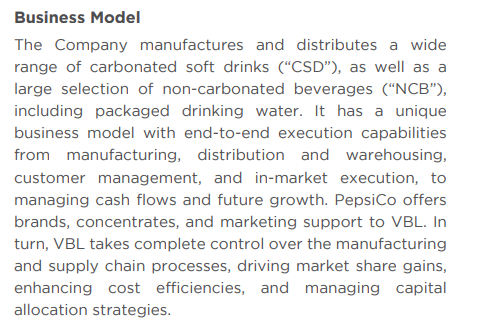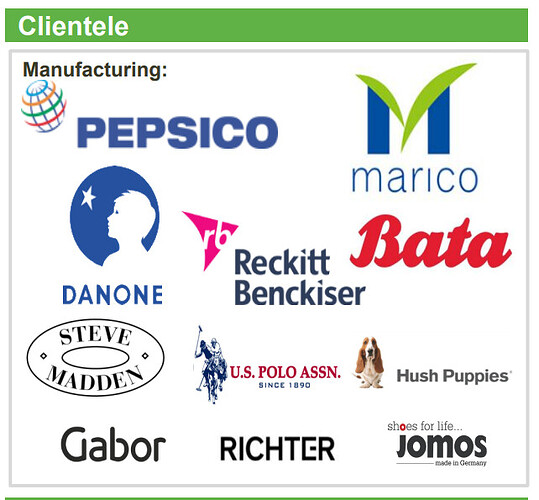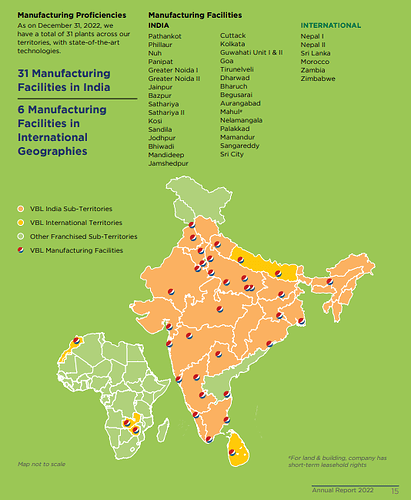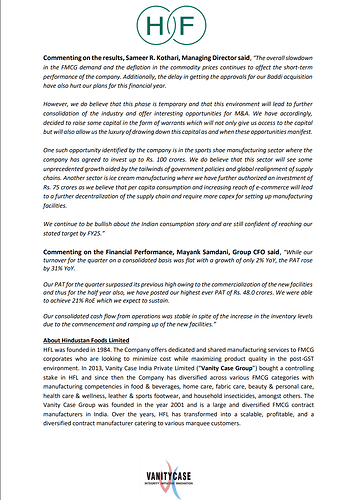Has anyone looked into the depreciation rate of the company. How can the dep be only 4-5%?
Is this the reason for positive PAT margin? Would love to know if someone has done some work on this.
Most of the growth is coming from promoter merging his pvt companies in to the company. What is the organic growth rate ex of mergers/acquisition/amalgamations?
Some observations from Concalls:
-
Management stated that its goal is to reach INR 4,000 Crore Revenue in next 3-4 years.
-
It also said that the underlying opportunity in FMCG contract manufacturing is huge and HFL has scratched the surface in terms of categories like pet food, confectionaries, savories, color cosmetics, deodorants, etc.
-
Management also added that the Company wants to add more Products that will add Value to the Company. Additionally, HFL has also started looking at adjunct sectors and are excited by the Health & Wellness Sector, which is more value added as compared to FMCG.
-
Moreover, on basis of above, the Management is confident on achieving its immediate of INR 2,000 crore Revenues in FY22. Also, HFL’s vision 2025 is to double the Turnover in next 3 years by exploring both Organic & Inorganic opportunities.
CAPEX and other Expenses
- Management further added that the New Plants & Facilities will also help the Company in achieving the said target of Doubling its Revenue, but that will require additional CAPEX too.
- As per the Management, Company has witnessed some moderation in sales during Q-1, as compared to last Quarter, because of the second wave and change in the product mix. It also stated that HFL has been able to protect bottom-line due to the inherent nature of the Business Model.
- It also stated that HFL continue to invest in CAPEX, due to which interest cost and depreciation have increased slightly. But, HFL’s focus on effective control over working capital and effective deployment of capital will help in improving return ratios in the coming period.
- Management also mentioned that its recently commissioned facilities at Silvasa and Hyderabad have been ramping up well and started contributing to the Revenues.
- It mentioned that in Q-1, 2021-22, HFL’s Manufacturing Cost decreased because Factories produced less due to second wave of Covid. Management also added that in Q-4 2021, there are also some one time Expenses like Stamp Duty & Provision. This is the another reason of reducing Manufacturing Cost.
“In addition to its existing portfolio of juices and CSD, the company is teaming up with
two of the largest beverage players in the country. The commercial production for the
same at the Mysore facility will commence by June ’23”
". Given the market share of these two customers,we are optimistic about the potential of this new relationship and are looking forward to working with these companies to identify new locations for setting up factories and ramping up existing facilities to serve the growing demand of the Indian customer "
(from the presentation)
Any idea who are these two beverage players who has teamed up with Hindustan Foods ?
One of them is definitely Pepsi… (other top Beverage players include Coca-Cola, Nestle, Parle, Dabur, Bisleri)
Below is from their FY18 presentation
btw I am not sure what Varun Beverages will do if Pepsi outsources its production to them…
Correct me if I am wrong. VBL are the distributors/manufacturers for Pepsico whereas Hindustan Foods are a contract manufacturer with no experience in distribution. Hindustan Foods basically manufactures on behalf of other companies who might not be wanting to do capex themselves or have tied up with Hindustan Foods to meet near term demand.
So I don’t think they have Pepsico as a direct client, and rather its VBL giving them the license to manufacture certain products.
I maybe completely wrong in my understanding.
It will be very interesting if it were pepsi . After all, why would Pepsi want to risk a growth market with just one vendor in VBL.
They made kurkure for pepsi. I doubt its beverages
VBL’s manufacturing footprint…
Looks like they’re not present in Mysore but they’ve already covered Karnataka.
VBL’s Biz model looks much more complex to me vs. HFL as they do the following:
- Contract Manufacturing
- Manage distribution
- Warehousing

Don’t think VBL will let HFL enter on its turf though! (as far as Pepsi is concerned)
My issue is that the company is not generating free cash flows from so many years.
Assets have been increasing, so are sales and profits, but there is also debt. There has been capex, and FCF is negative.
And there is price appreciation in the stock, and consolidations, because of previous high moves.
Not invested.
Its actually very dangerous if the sales and profits are increasing , there is no free cash flow. That means on paper it is profitable but cash generation is not there- that too 80x valuation- More risk exists - Just being a contract manufacture, margins are low.
I dont know whether the management has spoken about free cash flow generation but they cant just go on expanding without generating fcf.
AFAIK businesses with capex requirements and are expanding need capital, so there will not be FCF, although some businesses don’t take debt, here with this company, there is debt too.
I don’t know about the valuations or other aspects of the business, and as such, I have no position, so cannot comment on anything.
I just gave the probable reasons I have found by looking at the numbers, to your comment.
Bro, you’re understanding is wrong.
Of a company generates OCF of 100 rs, it has two choices. One to use the money for expanding the business. This is good as long as the Co haa good ROCE.
Second, don’t do expansion. Then all the OCF will move to FCF. which would be used for Dividend, Buyback etc.
If the Co stops expansion of business, then cash flow from investing activities would be zero. Then all the ash) cash would flow to FCF
I dont mind company doing capex, the idea is not to be overdoing capex . Capex should be in a controlled manner so that fcf generation is there. There has to be balance between growth and fcf. remember if they lose big client - they lose revenue. They have to service debt but ebitda and cash flow becomes lesser.
Risk are very important to consider and not just paper growth. That too 80x valuation.
Its my opinion
Disagree a little here.
Let’s say a company as 100rs of cash.
If it can invest that money and generate 20rs (roce of 20 percent) or more on its investment. Then it’s good that the co invest that money (capex etc.)
If it can merely generate 5-10 rs on it, instead it should distribute the cash as dividend.
If you still think a company should generate FCF generation is always needed, feel free to do so
DMART has been a negative FCF co since it has been in existence. Walmart was negative FCF for atleast 2-3 decades since its inception. Does this imply these businesses are risky and bad?
How fast to expand is obviously very subjective. Promoter believes that there is an opportunity to grab and gain market share and at the same time maintain reasonably good RoEs of 18-20% then why not?
Had the return ratios would have been poor and declining and the company would still have been expanding then I would have been more concerned. Hope this helps.
Also, 80x is TTM valuations. For next few years you will see effective tax rate much lower at 22-23% (vs. 35% till last year). MAT is completely exhausted now and company is on new tax regime. Also, newer plants will be at 15% tax rates. It trading at 60/42x FY24/25E eps.
Sixth sense ventures exiting the stock
Positive OCF is important than Positive FCF. If they are investing OCF with a return higher than WACC, it’s always good which means they are adding value. If they can’t generate return higher than WACC, then value is destroyed and in that case instead of investing, they should instead pay back that money in terms of dividend etc.
Hindustan Foods are looking into investing in sectors like sports shoe manufacturing and ice cream production. ![]()
The Managing Director, Sameer R. Kothari, explained that the company’s performance has been affected by a slowdown in demand for fast-moving consumer goods (FMCG) and falling commodity prices. They also faced delays in getting approvals for an acquisition in Baddi. However, they believe these issues are temporary and plan to raise capital through warrants. This will provide them with funds to take advantage of opportunities in mergers and acquisitions (M&A). They’re looking into investing in sectors like sports shoe manufacturing and ice cream production.
Mayank Samdani, the Group CFO, mentioned that even though the company’s overall revenue remained flat with a 2% year-on-year growth for the quarter, their profit after tax (PAT) increased by 31% compared to the previous year. The PAT reached a record high for both the quarter and the half-year. The company also achieved a 21% Return on Equity (RoE). Their cash flow from operations remained stable despite higher inventory levels due to new facilities coming online.
Hindustan Foods Limited (HFL) is a company that provides manufacturing services to FMCG companies, helping them reduce costs and improve product quality. It’s been around since 1984 and is now part of the Vanity Case Group. HFL manufactures various FMCG products, including food, beverages, home care, and more, serving many well-known customers.



